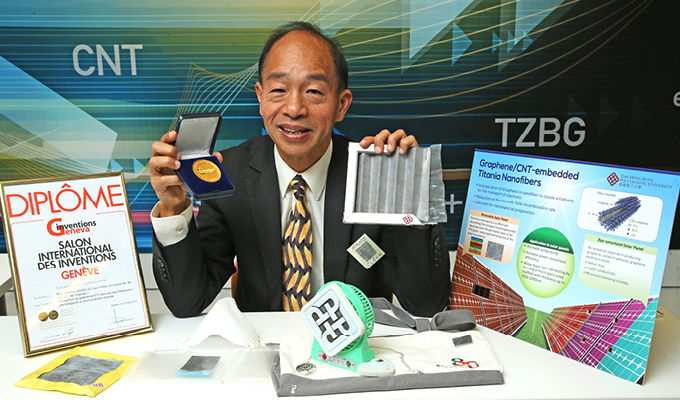Semiconductors made into nanofiber of diameter as small as 60nm (thinner than 1/1,000 of a human hair) have been widely used in modern daily life photonic devices and non-photonic devices. However, in semiconductors, electrons and holes generated after absorbing light energy tend to recombine easily, reducing both the current and effectiveness of the device. Such nature has limited the further development and applications of semiconductor nanofibers.
Recently, the research team led by Prof. Wallace Leung at the Department of Mechanical Engineering has found a solution to remedy electron-hole recombination. By applying electrospinning, highly conductive nano-structures can be inserted into semiconductor nanofiber to increase electric charge transport, light harvesting and surface area for absorption. The novel nano-composite produced provides a dedicated super-highway for electron transport, greatly enhancing the current and eliminating the problem of electron-hole recombination. This breakthrough has enabled the research team to embark on further research on the applications of the novel nano-composite, hoping to further increase the efficiency of solar cells and photocatalyst performance in air cleaning.
This innovation won the Gold Medal with Congratulations of the Jury at the 45th International Exhibition of Inventions of Geneva. Details>>